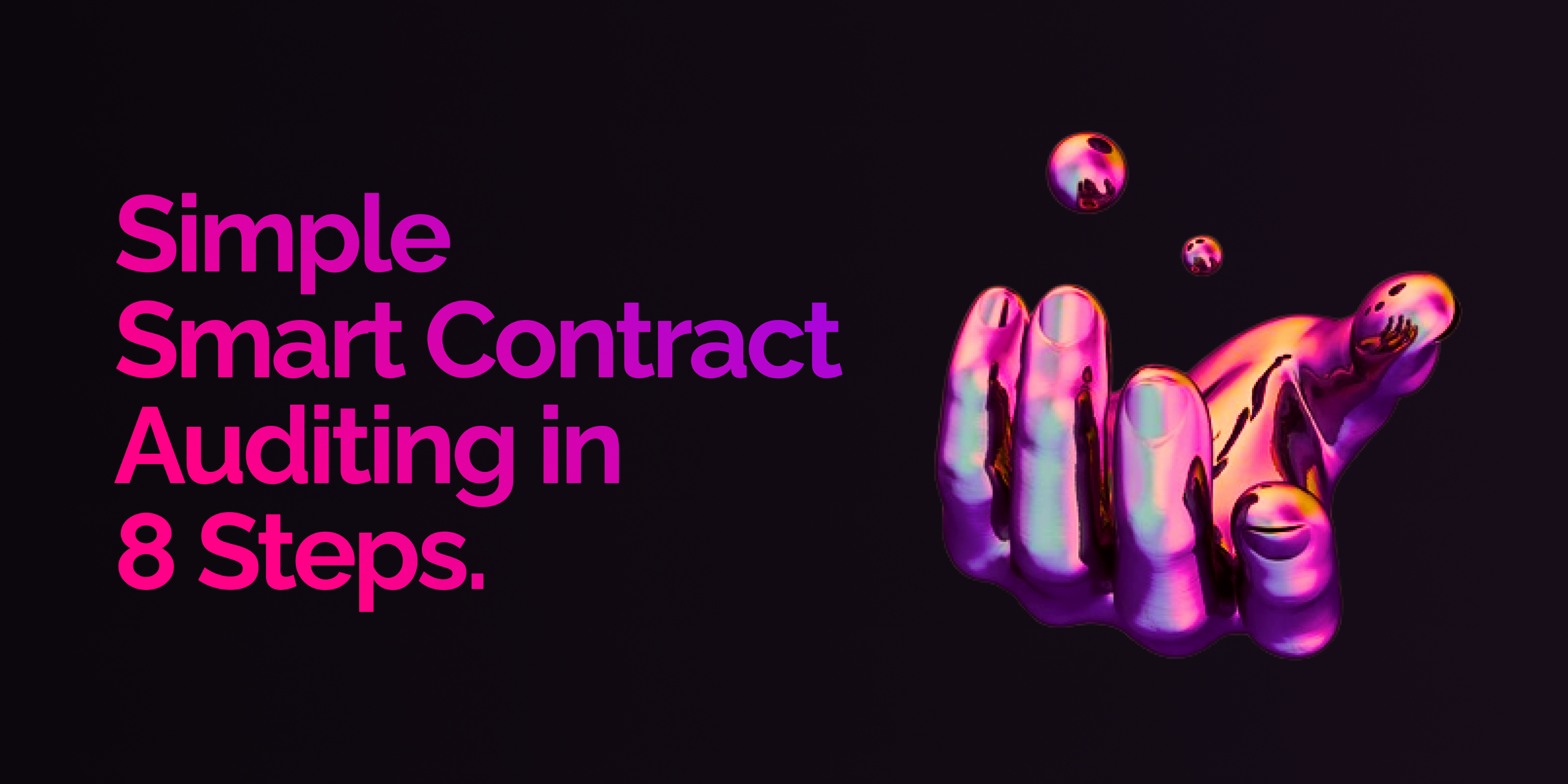Simple Smart Contract Auditing in 8 Steps
 Natachi Nnamaka
Natachi NnamakaTable of contents
- Introduction
-
- Step 1: Download the code and read the documentation.
- Step 2: Check out previous audit reports, if any.
- Step 3: Introduce and use tools that you are very conversant with.
- Step 4: Organize contract files based on the level of complexity or code size.
- Step 5: Carefully look at the code to find bugs.
- Step 6: Run tests and sometimes write fuzz tests.
- Step 7: Ask questions and communicate with your team and developers.
- Step 8: Write a comprehensive audit report.
- Conclusion:

Introduction
Smart contract auditing is an essential part of the blockchain ecosystem, and it's vital to get it right. To ensure the safety and security of your smart contracts, I'm going to share with you a simple yet effective smart contract auditing process. This process will help you identify potential bugs, vulnerabilities, and security flaws before your contract is deployed to the blockchain, saving you a lot of time and money in the long run. So let's dive into it!
Step by Step:
Step 1: Download the code and read the documentation.
The first step in auditing a smart contract is to download the code and read the documentation. This will give you an idea of what the contract is supposed to do and how it is designed to do it. Make sure to take note of any special features, such as external libraries, that may be used in the contract.
Step 2: Check out previous audit reports, if any.
It is always a good idea to check out any previous audit reports that have been done on the contract. This will give you an idea of what issues have been identified in the past and how they were addressed. It will also help you to avoid duplicating efforts and identify any areas that may have been missed in previous audits.
Step 3: Introduce and use tools that you are very conversant with.
Introduce and use tools that you are very conversant with. These can be tools for static analysis, dynamic analysis, or fuzz testing. Make sure to use tools that are appropriate for the specific contract you are auditing.
Step 4: Organize contract files based on the level of complexity or code size.
Organize contract files based on the level of complexity or code size. It is important to keep track of the contracts you haven't started, currently working on, or are done with. You can also take notes and leave comments in the code or use an additional note file.
Step 5: Carefully look at the code to find bugs.
Carefully look at the code to find bugs. This is the most important part of the audit process. Look for issues such as buffer overflows, integer overflows, race conditions, and logic errors. Make sure to take notes and document any issues that you find.
Step 6: Run tests and sometimes write fuzz tests.
Run tests and sometimes write fuzz tests. This will help you to identify any issues that may not be apparent during a manual review of the code. Fuzz testing involves sending random inputs to the contract to see how it responds.
Step 7: Ask questions and communicate with your team and developers.
Ask questions and communicate with your team and developers. If something is not clear, don't hesitate to ask. It is important to have a good understanding of the contract and how it works before you start the audit process.
Step 8: Write a comprehensive audit report.
Write a comprehensive audit report. This report should detail all of the issues that were identified during the audit process, along with recommendations for how to address them. Make sure to document any steps that were taken to mitigate the issues.
Conclusion:
In conclusion, auditing smart contracts is an important process that can help to ensure that contracts are secure and free of vulnerabilities. By following the simple process outlined in this article, you can help to identify potential issues and address them before the contract is deployed to the blockchain. Remember to always communicate with your team and developers and document your findings and recommendations in a comprehensive audit report.
Subscribe to my newsletter
Read articles from Natachi Nnamaka directly inside your inbox. Subscribe to the newsletter, and don't miss out.
Written by

Natachi Nnamaka
Natachi Nnamaka
I am a junior blockchain developer with a background in frontend development. I have a passion for technology and have always been interested in the potential of blockchain to revolutionize various industries. I have a strong foundation in frontend technologies such as HTML, CSS, and JavaScript, and have recently been working on expanding my skillset to include blockchain development. I am excited to continue learning and growing in this field and contribute to the development of innovative blockchain solutions.